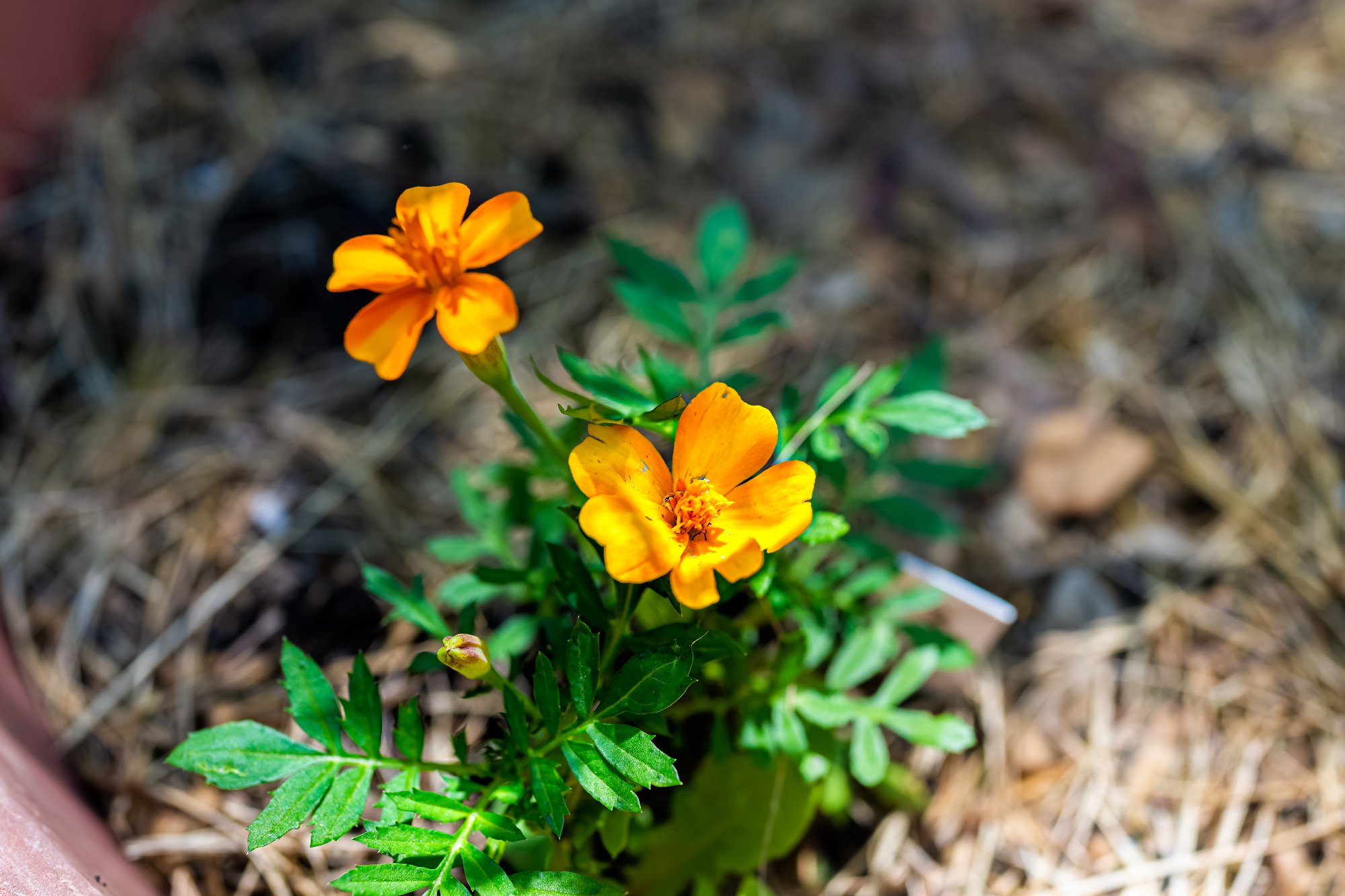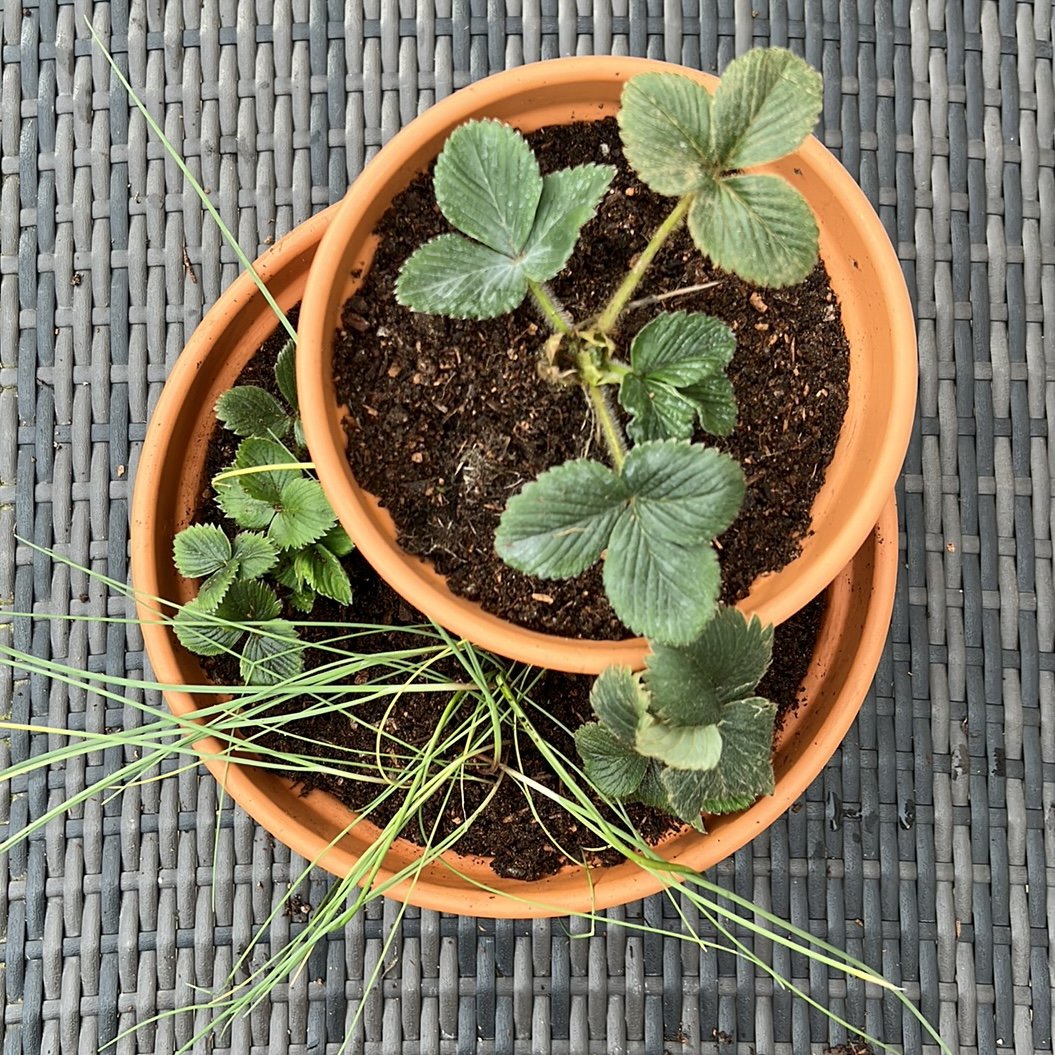Growing Strawberries in Pots
Growing strawberries is a great way to get children involved in gardening. Who can resist the thought of picking (and eating!) fresh strawberries from your own garden? Yum! Not only are strawberries delicious and nutritious, but they are also relatively easy to grow, making them perfect for little green thumbs to cultivate.
You can plant strawberries in the ground, but they are also happy growing in containers, window boxes or even hanging baskets which also adds some protection against slugs and snails who might like to nibble your plants!
Strawberries are best planted in early spring after the last frost of the season. This allows the new strawberry plants to establish roots before the hot summer months.
What you will need:
A planting container or two different sized containers if you’d like to stack them
Young strawberry plants
Companion plants (optional)
Old, broken pots or stones for drainage
Multipurpose, peat-free compost
Watering can
Trowel
What you need to do:
Choose your growing containers
Strawberry plants have quite shallow roots so a wide, shallow container is perfect for growing a few plants together. You can grow up to three strawberry plants in a 30cm wide pot.
You can also stack a couple of different-sized pots to make use of vertical space like I have done. If you want to stack more than two pots, you’ll need to support them by centralising the pots and pushing a cane through the the drainage holes. The pots I have used to make this stacked planter are 28cm and 18cm.
Ensure that the pots have drainage holes to prevent waterlogging, which can lead to root rot.
Select your strawberry plants
Summer-fruiting strawberries are the most popular choice for a garden and the ones you will find most easily for sale in garden centres and supermarkets. They come into stock in spring and can be planted as soon as purchased. They have one cropping period where they produce a large amount of strawberries over a short time (2-3 weeks) from early to midsummer. You can pick several different varieties of strawberry plant, each with a slightly different cropping time, to extend the fruiting season.
There are two other main types of strawberries: perpetual or everbearing strawberries which produce fruit over a longer period but the crops are much smaller and the strawberries not as big as summer-fruiting varieties; and alpine or wild strawberries – these are compact plants which produce tiny, but delicious, fruit and, unlike the other two types, these strawberries are quite happy in the shade.
Companion plants
Companion planting is a great way to help your strawberry plants stay healthy and increase your harvest. Companion planting is all about growing different plants next to each other that are known to benefit one another, for example, by providing nutrients in the soil, offering protection from wind or sun, suppressing weeds and also by attracting beneficial insects or deterring harmful ones.
Plants that are good to grow alongside strawberries in containers include marigolds, spinach, lettuce and herbs such as basil and chives.
Planting your strawberries
Start by adding some good quality, peat-free multi-purpose compost or potting mix to your containers, leaving about a 2cm gap at the top.
Gently ease your plants from their nursery pots. Make a hole for each plant in the potting mix, leaving a space for your second pot if you plan on stacking them.
Set the plants in their holes and back fill with potting mix. Make sure the crown of your strawberry plants (where the stems emerge from) is just above the soil level, otherwise they will rot.
Gently press down to firm the compost.
Stack your smaller pot on the larger one and push it into the compost a little way so that it is nice and secure.
Place your strawberry container in a sunny spot and water the plants well.
Looking after your strawberry plants
As strawberries have shallow roots systems, they are susceptible to drought so water the plants whenever the top inch of soil feels dry. This might be every day during hot weather. Try to avoid watering the leaves as this could cause mould to develop on the plant. Instead, water around the base of the plant.
You can add a layer of mulch, such as straw or shredded leaves to the surface of the soil to help retain moisture and suppress weeds.
Strawberries are hungry plants so feed your strawberries every couple of weeks during the growing season. Nettle fertiliser is a great feed for strawberries and it’s really easy to make you own. Check our blog post here for instructions!
Harvesting your strawberries!
Your strawberry plants should start to flower from April and then it may take about 3-4 weeks for the plant to produce berries.
Strawberries will be bright red all over (check the underside!) when they are ready for harvest. You might need to peek under the leaves to find them.
Strawberries bruise easily so twist them gently to remove them from the plant.
After harvesting
As your strawberry plants grow, they may produce runners - long stems with new plantlets at the end. In the first few years, it is best to trim them off so the plants put more energy into fruit production. However, after 3 or 4 years, strawberry plants start producing less or smaller fruit so that’s a good time to start rooting runners to grow more plants to replace them.
To do this, choose a healthy-looking runner and place a small pot with multipurpose compost underneath the plantlet. While keeping the plantlet still attached to the parent plant, secure the strawberry runner on the surface of the compost using a u-shaped piece of gardening wire or you could use a hairpin or bent paperclip. Water the pot and as soon as the plant begins to grow, usually 3 to 4 weeks, cut the runner.
Now you should have an ongoing supply of strawberries to enjoy!
Author: Denise Hope, home educating mum of two boys
If you’d like to receive regular gardening activities for children alongside nature craft activities, subscribe below to receive a monthly Mud & Bloom box! Each monthly Mud & Bloom box contains two lots of seeds or bulbs to plant and at least two nature craft activities.











